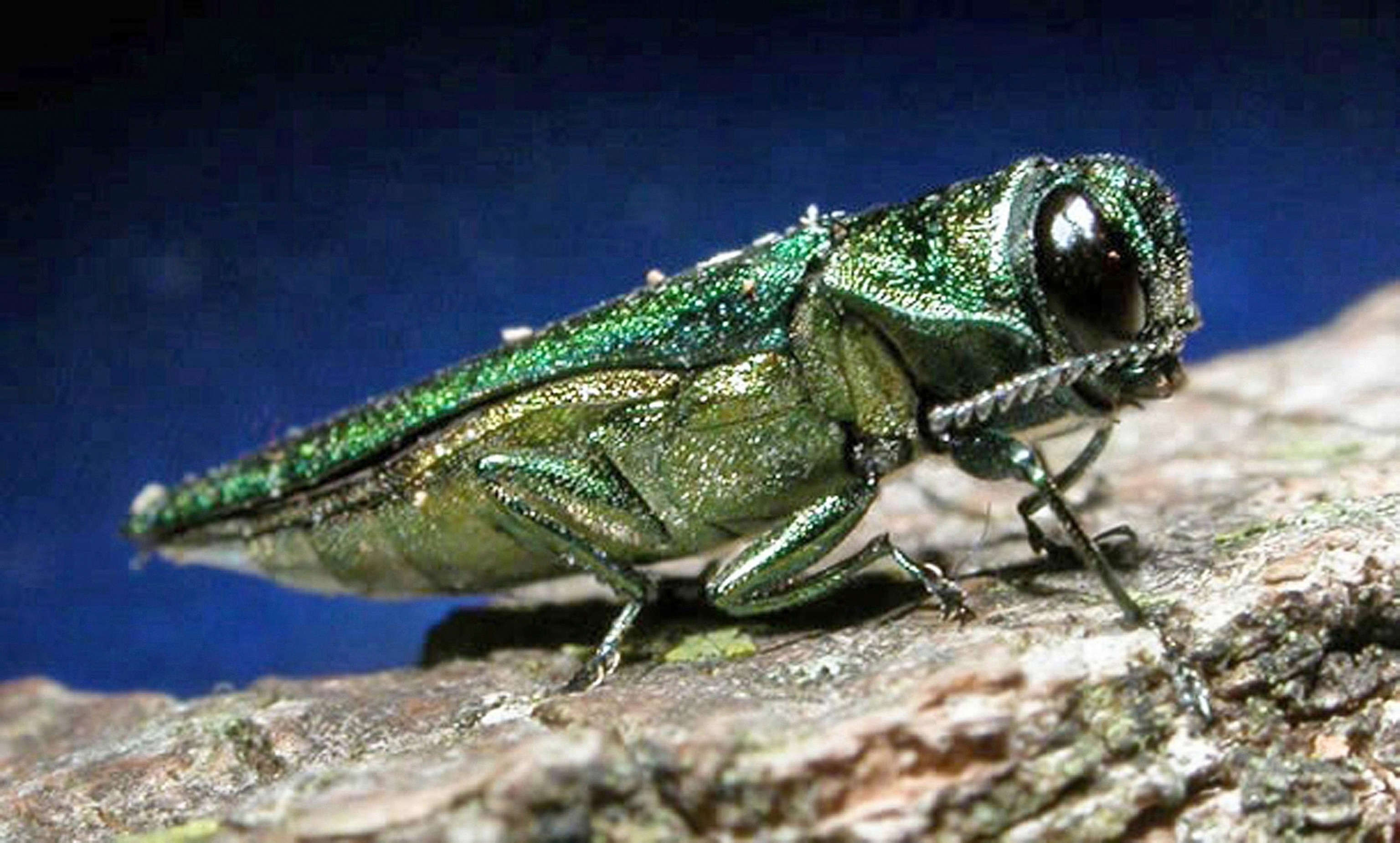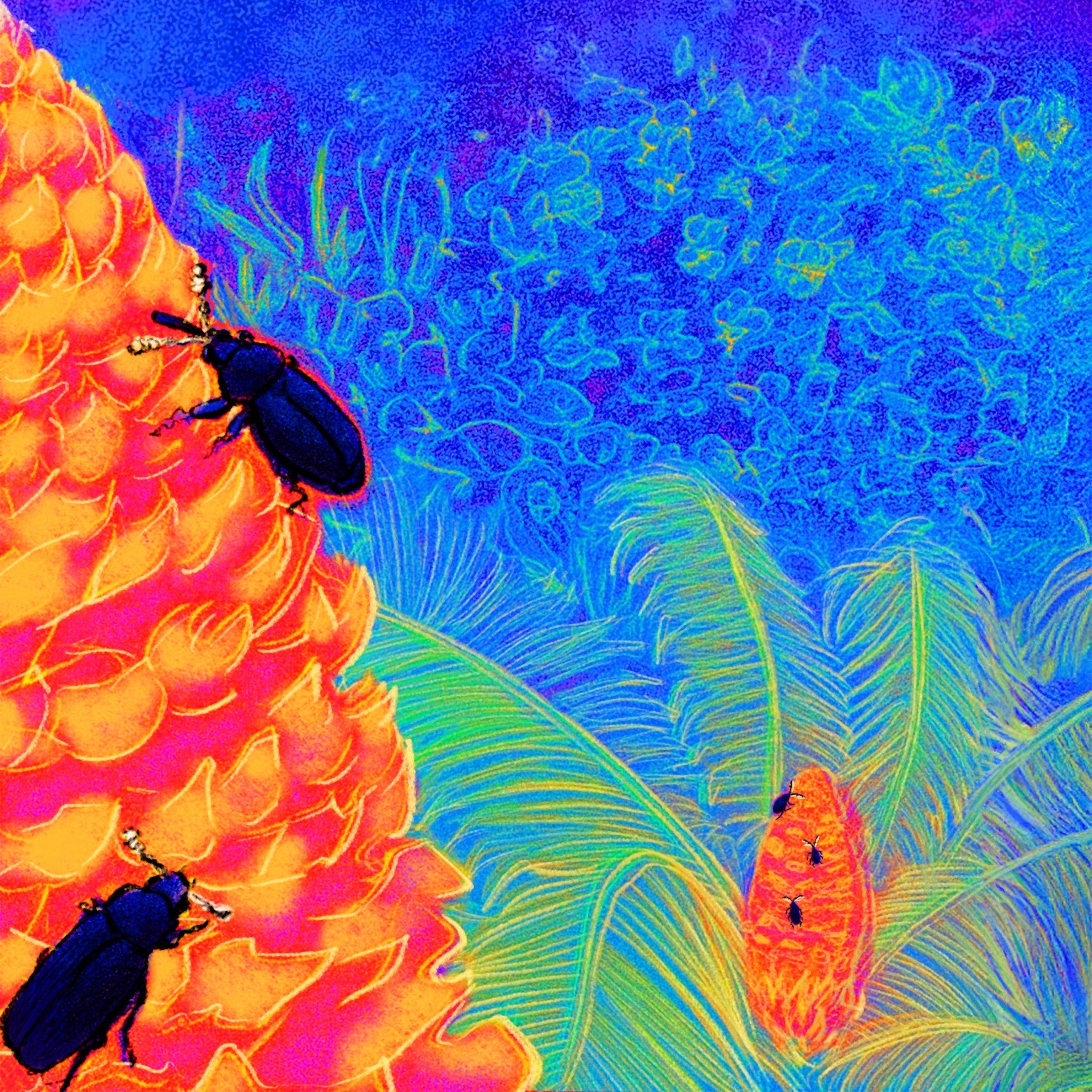
Millions of Ash Trees Are Dying, Creating Huge Headaches for Cities
Ash trees are a dominant species on American city streets, but an invasive beetle is killing them off.
KANSAS CITY, Missouri—Forester Kevin Lapointe remembers clearly the day he and his colleagues at the Kansas City Parks and Recreation Department did their first autopsy on a dead ash tree. Under its peeling bark, they found S-shaped burrows running across every inch of the outer layer of wood. Looking closer, they discovered the killer: a slender green beetle smaller than a penny.
The emerald ash borer, or EAB, a native of East Asia, has already devastated entire ash populations in northern cities such as Detroit, where it first appeared in 2002. Since then, the insect has swept into 22 states across the country. In the summer of 2012 it reached the Kansas City metropolitan area.
There are seven billion ash trees in North America, and within the next few decades, the beetle could kill most of them—a die-off ten times bigger than the one caused by Dutch elm disease.
In big cities, where ash species account for up to a quarter of trees in public spaces, planners must consider the environmental consequences of the massive die-off—liability hazards, an increase in stormwater runoff, and the simple problem of disposing of millions of dead trees. And officials don't have time to waste.
Eight years after the initial discovery of the beetles in an area, about 50 percent of the ash population will die—all at once. The rest die within another two to three years. In the Kansas City metropolitan area, where Lapointe works, 6.4 million ashes are on track to die as early as 2015—unless they receive insecticide treatment.
Chad Tinkel, who inherited an EAB problem when he became the city arborist of Fort Wayne, Indiana, didn't have the luxury of early identification or a big city budget for prevention. Of the 18,000 ash trees that once shaded Fort Wayne's sidewalks and parking lots, only about 1,300 remain alive. Tinkel now speaks about EAB to municipalities across the country.
"If you know that it's coming, be proactive," he says. "Get your plan in place. Get your budget set. Too few decision-makers realize that trees are infrastructure—just like a city bench, just like a streetlight—and they pay back more than they cost to put in."

Cut Them or Save Them?
A good first step is a tree inventory. Kansas City did that a decade ago, identifying the location and size of all its trees.
That helps foresters track trees that are about to die, though it doesn't solve the problem of what to do with all the wood. Burning the wood causes air pollution; dumping it in landfills take up space and releases methane, a potent greenhouse gas.
In Fort Wayne, Tinkel partnered with a local lumberyard to process the influx of dead trees. The city uses the profits to replace the ash trees. In the Northeast, companies such as New York Heartwoods that specialize in milling distressed trees are gaining traction in the market. A project in Ohio is making desks and cubbies out of urban hardwood.
After researching solutions like these, two private Kansas City businesses, Missouri Organic and Urban Lumber Company, entered a partnership with the city. They established drop-off sites for homeowners and arborists. Urban Lumber gets first dibs on wood that's usable for milling, and Missouri Organic turns the rest into mulch.
It sounds like good economic sense, but Deborah McCollough of Michigan State University is ambivalent about such measures. She says she's sat at conference tables made of beetle-killed ash: "I hate to even see that, because it means people have given up."
According to McCullough, insecticide research has improved since the early days of the EAB infestation, and in many cases today, treating trees with insecticide is cheaper than cutting them down.
Kansas City plans to treat the roots of about 12,000 trees on city property, spending about $80 a tree for protection that lasts up to three years. Once taken up by the roots, the insecticide travels up the trunk under the bark—which is exactly where the beetle larvae do their damage, feeding on the wood and boring tunnels that interrupt the flow of water and nutrients through the tree.
Since the insecticide has to be reapplied every few years, it may not be economical as a permanent solution. But by preventing all the ash trees from dying at once, it would at least buy the city some time to replace its canopy and give its local partners time to create markets for beetle-killed ash products.
At a total cost of nearly $100 million for the city, even a one-time application of insecticide is a costly investment. "You have to look at the environmental, economic, and political benefits of a live tree," Lapointe says. Tree-value calculators show that trees save millions of gallons of water from entering cities' storm-water systems.

Hopeful Signs
What's the future of ash trees in America? As EAB spreads across the country, says Mark Nelson, urban forestry supervisor for the Missouri Department of Conservation's Kansas City region, "the best we can hope is to slow it down."
Still, some scientists say, it's possible that ash trees won't have to go the way of the Dutch elm or American chestnut. "We will probably see in very vulnerable species of ash, their functional role in forest ecosystems will disappear," McCollough says. "That doesn't mean they will necessarily go extinct. Even where we've seen nearly 99 percent of overstory trees have been killed by EAB, seedlings are still growing and getting larger."
Other species, such as blue ash, are less vulnerable: 60 to 70 percent of them have survived in EAB-ridden areas. In addition, more predators are learning to eat the beetles, and Asian wasps that prey on EAB have been introduced to control the population. "Whether they can keep EAB back [until] ash trees can rebuild populations," says McCullough, "that's what we're not sure of yet."
In the void left by the vanished ashes, cities nationwide are planting more diverse species than ever before. Fort Wayne, for instance, has instituted a "Shading Our City" management plan that doesn't allow more than 10 percent of any tree species to be planted in one area. Tinkel wants his city's forest to be able to cope with future pests, blights, and climate change.
"You can't manage a biotic thing with a static plan," he says. "I don't want to be the person that sets people up for another infestation in the next generation."








